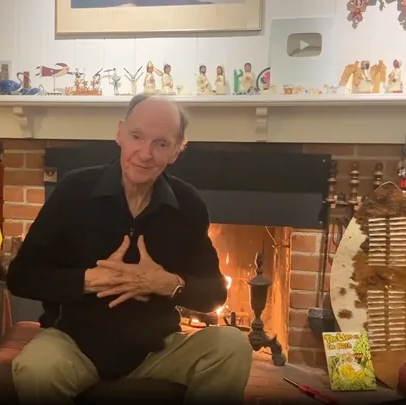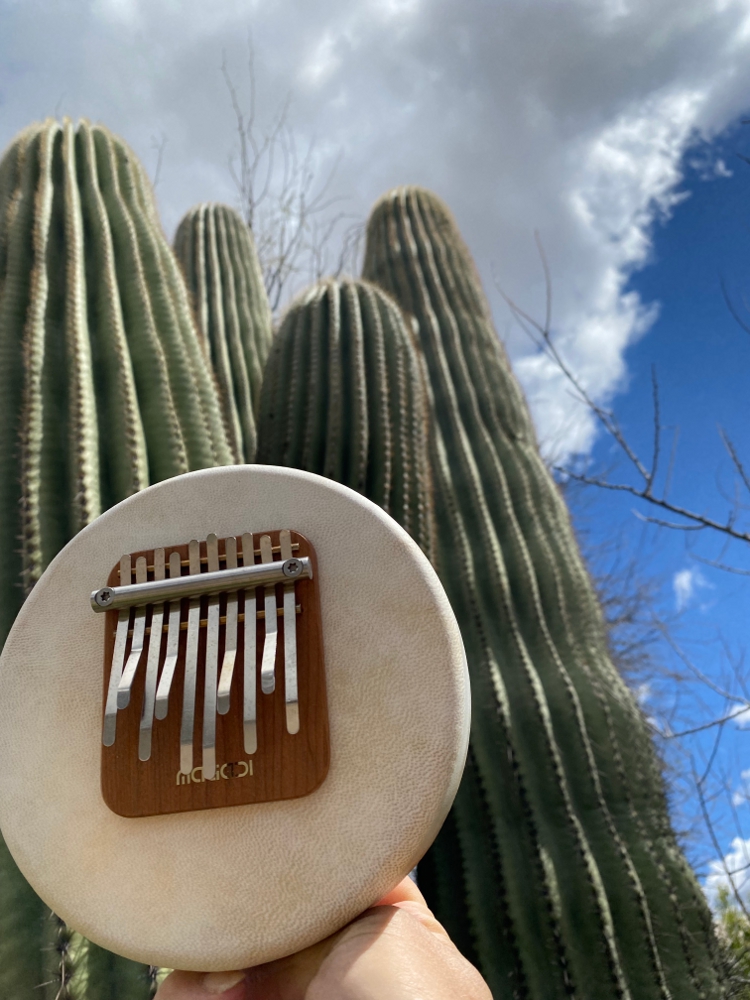
Use of this website constitutes acceptance of the Privacy Policy and User Agreement. Copyright © 2020 Kalimba Magic. All Rights Reserved.
An introduction from Mark:
High level musicians dedicate their body, their time, their soul, and years to their art. They are driven by the dreams of the greatness they have touched in their musical experiences, and they invest their very lives to this god of music. But what happens when their body fails them? When pain and debility make their work and ambitions look like one of God’s great jokes?
Many musical instruments are quite physically demanding: guitar, upright bass, piano, and especially, the violin. But playing the kalimba, in contrast, can be quite gentle on the body, requiring mainly an easy motion of the thumbs.
I invite you to read Klara Wojtkowska‘s stirring and poetic piece about her journey through the pain of a debilitating autoimmune disease and on to the world of delight and comfort created by the sound and playing of karimba and mbira. It’s a beautiful, inspiring trip!
Here is Klara’s essay. I hope it moves you as much as it did me.
– Mark
When my knees first began to twang with uncomfortable stiffness, I was a professional violinist and thespian, immersed in a life of mime and dance. Having been in remission for a year and a half from certain flaring states of heated autoimmunity (that they are debilitating goes without saying), I spent my glorious, pain-free time teaching my body the coordination it had lost with my first surgery and diagnosis (of Juvenile Rheumatoid Arthritis) at the age of twelve. My knees took to the task cautiously, like two overgrown puppies being taken outside for the first time. They didn’t trust each other or themselves. They continually expected the familiar fire to come and hack at them like a lumberjack walloping an axe into a tree trunk.
For a year and a half the fire didn’t come (for a year and a half!), enough time for my knees to get out and explore a bit, to feel what it is like NOT to feel the weather in my (their) bones, NOT to respond to lengthy and expansive bus trips with swelling and pain, NOT to live a life crutched up by injections that nobody I know can afford.
A full eighteen months: this was enough time for my knees to self-discover that they love to dance, that in fact all of those years of professional violin playing had masked their different kind of love of rhythm – one that had been quelled early on by scrupulous teachers smashing my enthusiastic tapping foot with damning, heavy-tongued fortune-telling: a good violinist keeps both feet rooted on the ground.
But this is not an article about violins, or fortune-telling, or knees. This is a story about thumbs. You’ve heard of thumbs, no doubt? I recently visited a friend of mine who has two pet rats. One time, when she was in the bathroom for an extended period of time (what honesty, to enjoy such things), her rats and I spoke about thumbs. They could not fathom what they were, or what they were for. I told them what I had heard in school: thumbs are the reasons why people rule the world, and not rats or dolphins. ‘What does it mean, to rule the world?’ they asked. ‘It means we do anything we want,’ I said. ‘Like play all day, and eat, and build things?’ they asked me. ‘No, it means we have responsibilities,’ I responded. ‘Like what?’ they puzzled at me. ‘Like taking care of you’, I revealed to them, attempting to bring my confusing tale closer to the homes of their own tails. ‘Then it is for the best that we do not have thumbs,’ they snuffled jovially, ‘as we eat what we want anyway, and we play all day.’
That is when I brought out my karimba. ‘Listen to this,’ I summoned their attention. ‘You play all day, yet can’t play a karimba – not without thumbs.’ And I played them a song, and the rattling of the beads whirring around the keys like tornadoes in love, brought out spirits that stilled even the whiskers of these rats, and teardrops the size of mustard seeds traveled down their furry snouts.
You see, music brings both relief to pain and hope to love. I had known these things through all my years of learning violin. Yet because my body consistently burst into painful wildfires since I was twelve, it was sometimes difficult for me to express all that music can be with my body and my instrument in tandem. How does a musician who can’t move find relief to pain, if playing music initiates the pain? Certainly, pain has its own song: the clacking of gritted teeth for some percussion. The dance of immobilized knees flopping up on beds or couches or tables. Howls at night.
I had taught my body expression for a glorious year and a half of freedom. And when the ghost of fire in my body returned half a year ago, I responded to it as I do to ghosts – I ignored it. (Pain gets louder, the more you try to suppress it – in this way, it is less wise than the music that gives courteous way to expressive silence.)
Pain does not like to be ignored. It is the most persistent beast of any that God created.
What is a musician locked into the wildfire of their body to do? There is not much by way of entertainment. Pain is pain is pain, and it is an ultimate distracter. And yet, my thumbs, these beings responsible for ruling the world, offered themselves, in perfect clarity and health: despite the pain, I could play the karimba.
You see, pain would be the perfect motivator for many things, if it itself was not so (damn) distracting. It is perhaps true, that no generation – no family – or single human personhood has lived from first breath to last without some experience of physical pain. And what to do? What to take, how to leave the pain elsewhere? How to leave the body, abandon it to its own useless misery the way one would leave a child throwing a tantrum in its room and lock the door until the child calms down?
My knees tantrummed at me consistently, day after day, growling and clomping on the joints like two mastiffs loose in an over-populated wilderness. My elbow, my shoulder screamed for attention, and then for more debili-tention. For violin, one needs the whole body (for every instrument, one needs the entirety of breath). But for the karimba, the thumbs are connected to the lungs, are connected to the throat, are the breath of water that flows and fountains, as opposed to the breath of fire that burns. The thumb knuckles twist and shout their way across the silver keys like two frogs out and about, hopping over each other’s wet backs. Flexibility in the thumbs makes up for what the knees currently lack.
My karimba has walked the path of ghosts with me, and with other people. Since my own adventures with soothing my flare-ups with the lovely sounds of the karimba, I have noticed that people in pain fall especially in love with this instrument. Recently one of my friends was hit by a car while peddling on a bike path. The karimba sang to her and her roommate in the hospital – they were both enchanted. An aunt of mine struggling with cancer for the nth year of her life, now speaks very little – yet enough to ask for “the instrument”, when I come to visit. My thumbs clackety-clack diligently, pain-free, pressing down on keys that ring and sweat beads of gold and ancient spirits of comfort songs.
When I returned to the ghost of fire in February (when the ghost of fire returned to me), music came back into my life in the form of the karimba woven out of the dance of thumbs on keys. My karimba, both sweet and garrulous in its inflections. My karimba, smelling like a happy tortoise sunning herself comfortably on a beach. My karimba, tasting of cinnamon and roots. My karimba, singing ancient songs.
My karimba, what would you like me to sing for you?
My friend, what accompaniment would you like for me to play?


Sign up for our newsletter and free resources with your email address:
We pinky promise not to spam you and to only send good stuff.
 Assist Paul Tracey Rebuild His House in Pacific Palisades
Assist Paul Tracey Rebuild His House in Pacific Palisades 8-Note Spiral Kalimba Turned into a Student Karimba
8-Note Spiral Kalimba Turned into a Student Karimba Seek to Infuse Your Musical Moments With Beauty and Magic
Seek to Infuse Your Musical Moments With Beauty and MagicUse of this website constitutes acceptance of the Privacy Policy and User Agreement. Copyright © 2020 Kalimba Magic. All Rights Reserved.